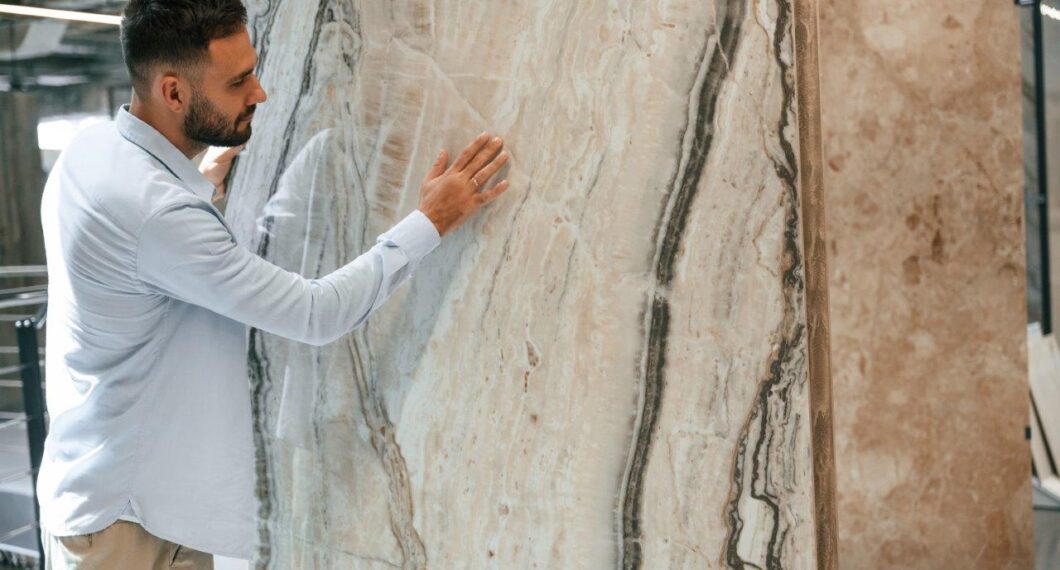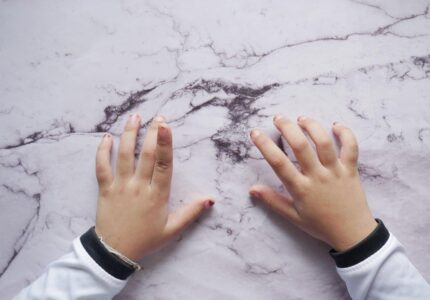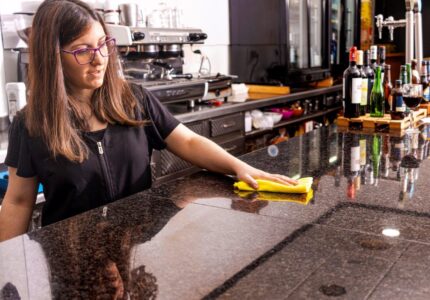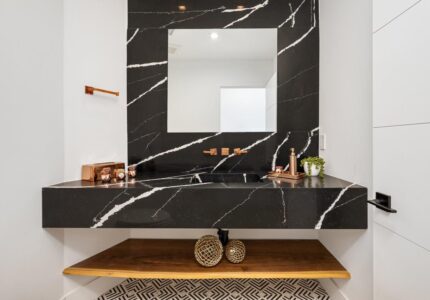Understanding Granite and Marble
When it comes to kitchen countertops, few materials can compete with the timeless appeal of granite and marble. Both are natural stones that bring elegance and value to any home. However, they differ significantly in terms of durability, maintenance, and aesthetics. Let’s break down these differences to help you decide which material is best for your kitchen.
Granite: The Durable and Versatile Choice
Granite is a natural stone formed from cooled magma beneath the Earth’s surface. It’s renowned for its durability and variety of patterns, making it a popular choice for busy kitchens.
Pros of Granite
- Durability: Granite is one of the toughest materials available. It resists scratches, heat, and everyday wear and tear, making it perfect for high-traffic kitchens.
- Variety of Colors and Patterns: Granite comes in a wide range of colors and patterns, from subtle whites and greys to bold reds and blues. No two slabs are identical, giving your kitchen a unique look.
- Durability: Granite is one of the toughest materials available. It resists scratches, heat, and everyday wear and tear, making it perfect for high-traffic kitchens.
- Low Maintenance: Once sealed properly, granite countertops are resistant to stains and bacteria. Regular cleaning with mild soap and water keeps them looking new.
- Variety of Colors and Patterns: Granite comes in a wide range of colors and patterns, from subtle whites and greys to bold reds and blues. No two slabs are identical, giving your kitchen a unique look.
- Cost-Effective: While granite isn’t the cheapest option, it’s more affordable than marble and provides excellent value for its durability.
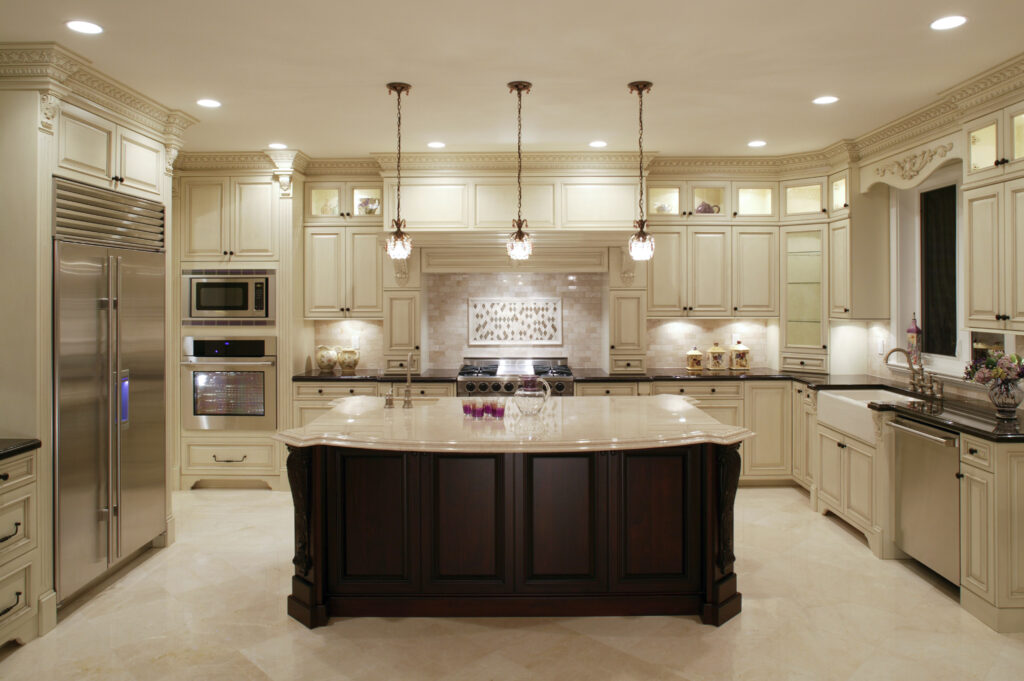
Cons of Granite
- Periodic Sealing: Granite needs to be sealed every 1-2 years to maintain its resistance to stains.
- Weight: Granite is heavy, requiring sturdy cabinets and professional installation.
When granite is appropriate, for example: A family with three kids and frequent cooking sessions opts for granite countertops. They love that hot pots don’t leave marks and spills don’t soak in, even when left overnight.
Marble: The Epitome of Luxury
Marble has been admired for centuries for its elegance and beauty. It’s a metamorphic rock known for its soft, veined patterns, making it a statement piece in any kitchen.
Pros of Marble
- Aesthetic Appeal: Marble exudes luxury with its classic, timeless beauty. Its smooth, cool surface is ideal for bakers and pastry chefs.
- Natural Coolness: Marble remains naturally cool, which is perfect for rolling dough or preparing delicate desserts.
- Unique Veining: The dramatic veining in marble gives each slab a distinct, artistic appearance that’s hard to replicate with other materials.
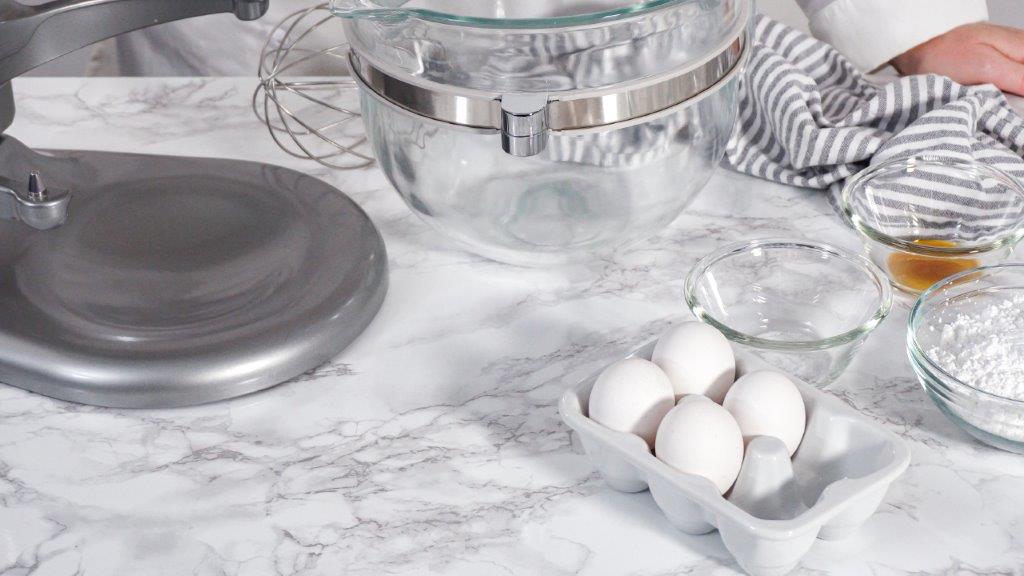
Cons of Marble
- Higher Maintenance: Marble is porous and more prone to stains, especially from acidic substances like lemon juice or red wine.
- Susceptibility to Scratches: Marble is softer than granite and can scratch easily, even from sharp knives or heavy cookware.
- Cost: Marble is often more expensive than granite, both in material cost and installation.
When marble is appropriate, for example: A couple who loves baking selects marble for their kitchen island. They appreciate the cool surface for rolling out dough but are careful to wipe spills immediately to avoid stains.
Durability: Granite Takes the Lead
When it comes to handling the daily grind of a kitchen, granite is the clear winner. Its resistance to heat, scratches, and stains makes it more practical for families and frequent cooks. Marble, while elegant, requires extra care to avoid damage from regular kitchen use.
Maintenance: Effort vs. Elegance
Granite requires less maintenance than marble. A quick seal every year or two keeps it protected, while marble demands constant vigilance against spills and scratches. If you prefer low-maintenance materials, granite is the way to go.
Aesthetics: Beauty in the Eye of the Beholder
Marble wins the beauty contest hands down, thanks to its smooth texture and dramatic veining. It’s a favorite for those looking to make a statement in their kitchen. Granite, while beautiful in its own right, offers a more practical aesthetic that blends durability with style.
Which One is Right for You?
Choosing between granite and marble comes down to your lifestyle and priorities. If you’re after a low-maintenance, durable countertop that can handle the chaos of a busy kitchen, granite is your best bet. However, if you value elegance and don’t mind putting in a little extra care, marble can turn your kitchen into a showpiece.
Utilizing Granite and Marble in Your Kitchen
Now that we’ve explored the strengths and weaknesses of granite and marble, let’s talk about how to use these materials effectively in your kitchen. Practical application is key to ensuring you maximize both the aesthetic and functional value of your investment. Below, we’ll discuss the best areas for their utilization, tips for care, and how to tailor your choice based on your lifestyle.
Granite: The Workhorse of the Kitchen
Granite’s durability and versatility make it suitable for almost every part of your kitchen. Here’s how to make the most of it:
1. Countertops
Granite countertops are the gold standard for busy kitchens. They can handle everything from hot pans to accidental knife slips without showing wear.
Practical Tips:
- Choose dark-colored granite for better stain concealment if you’re a frequent cook.
- Pair granite with a sleek backsplash for a modern, cohesive look.
- Ensure professional installation to handle the material’s weight and avoid improper seams.
Example: A family with kids chooses black granite countertops with subtle white flecks. The dark color hides minor messes, and the durable surface withstands the chaos of daily meal prep.
2. Kitchen Islands
For multi-functional kitchen islands, granite is a fantastic choice. It can endure the wear and tear of dining, cooking, and even homework sessions.
Practical Tips:
- Opt for a leathered or honed finish for a more textured, slip-resistant surface.
- Add overhangs to create a seating area, making the island even more functional.
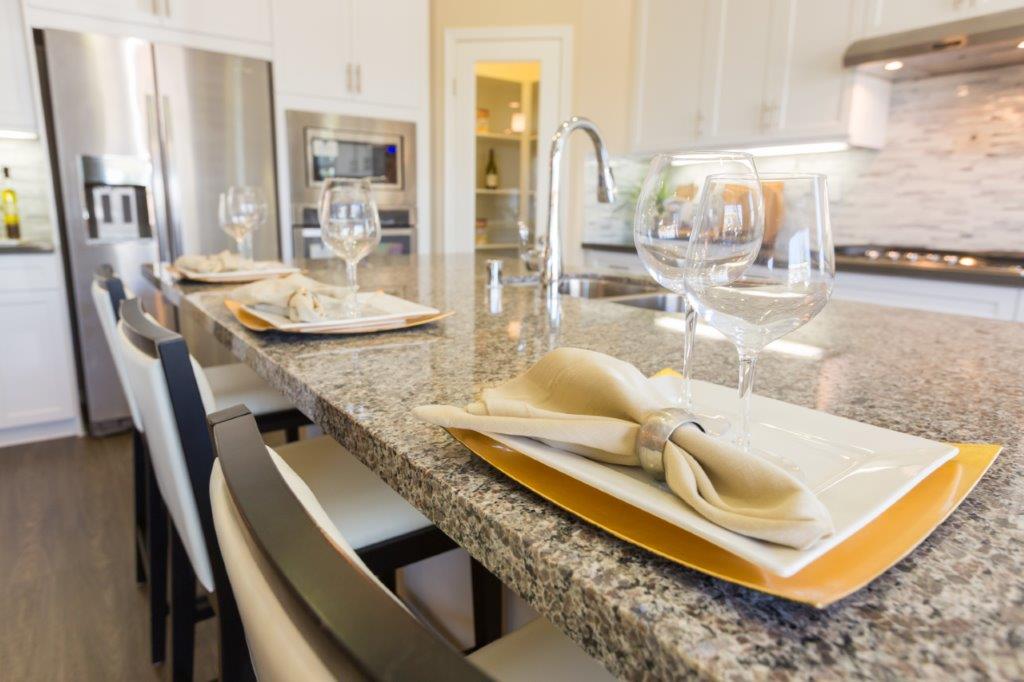
Example: A home chef installs a polished granite island with a built-in sink, combining style and utility in one centerpiece.
3. Backsplashes and Accent Walls
Granite isn’t just for horizontal surfaces. Using it as a backsplash or accent wall creates a dramatic and cohesive look.
Practical Tips:
- Match the backsplash with your countertop for a seamless design.
- Use lighter-toned granite to reflect light and brighten up small kitchens.
Example: A condo owner installs a granite backsplash in a light beige shade, making their compact kitchen feel larger and more open.
Marble: The Showstopper for Special Areas
Marble, while not as durable as granite, shines in areas where beauty and sophistication are the primary goals.
1. Kitchen Islands for Baking
Marble’s cool surface makes it ideal for rolling dough and working with pastry. Professional and amateur bakers alike appreciate its utility.
Practical Tips:
- Use marble on a smaller section of your kitchen island to save on cost while still enjoying its benefits.
- Seal the surface regularly to prevent stains from ingredients like flour, butter, or chocolate.
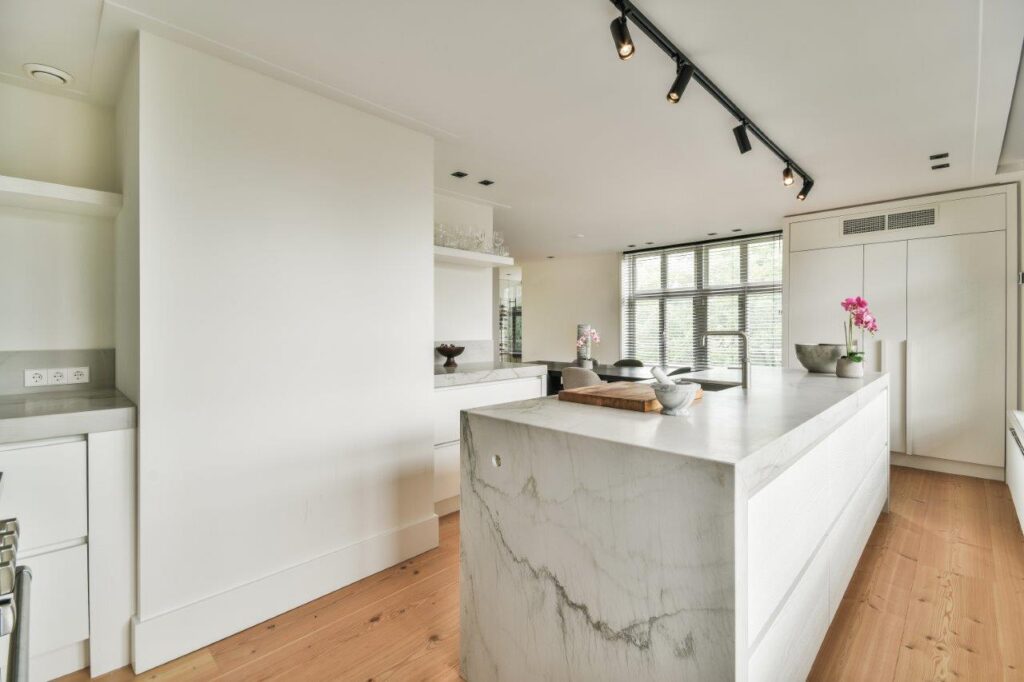
Example: A passionate baker installs a marble slab on one half of their island, creating a designated workspace for desserts.
2. Decorative Elements
Marble is perfect for decorative touches like waterfall edges, accent counters, or integrated shelving.
Practical Tips:
- Use marble sparingly in areas less prone to wear, like a breakfast bar or coffee station.
- Pair it with neutral cabinetry to let the natural veining stand out.
Example: A minimalist kitchen features a white marble waterfall edge on the peninsula, adding elegance without overwhelming the space.
3. Wall Panels and Backdrops
For homeowners who want a luxurious look, marble wall panels can create a stunning visual effect.
Practical Tips:
- Install marble panels behind the stove for a high-end, cohesive design.
- Choose large slabs to minimize seams and emphasize the natural veining.
Example: A high-end kitchen uses white Carrara marble behind the range hood, combining practicality with unmatched visual appeal.
Maintenance Strategies for Long-Term Performance
Granite Care
- Sealing: Reapply sealant every 1-2 years. Test by sprinkling water on the surface—if it darkens, it’s time to reseal.
- Cleaning: Use a pH-balanced cleaner or mild dish soap. Avoid acidic or abrasive cleaners.
- Daily Use: Use trivets and cutting boards to maintain the finish, even though granite is highly durable.
Marble Care
- Sealing: Marble needs frequent sealing to protect its porous surface. Check for absorption regularly.
- Cleaning: Wipe up spills immediately, especially acidic ones like vinegar or citrus juice.
- Polishing: Invest in professional polishing every few years to restore its shine.
Benefits of Choosing the Right Material
- Functionality Tailored to Your Needs:
- Granite is perfect for heavy-duty kitchens, providing durability and versatility.
- Marble works best in areas where beauty and occasional use take precedence.
- Increased Home Value:
- Both materials add significant resale value. Granite appeals to practicality-focused buyers, while marble attracts those seeking luxury.
- Timeless Aesthetics:
- Granite offers a diverse palette for modern and rustic designs alike.
- Marble’s veining creates a sense of artistry, perfect for classic or high-end interiors.
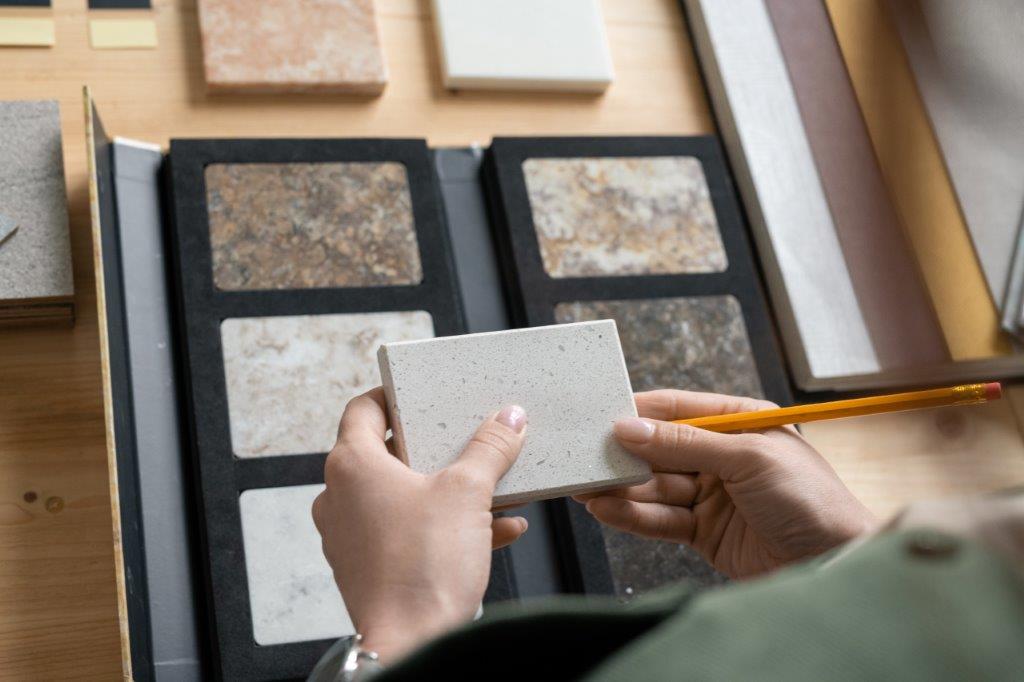
Final Thoughts: Granite or Marble?
Both granite and marble have their rightful place in the kitchen. For active families or avid cooks, granite is the go-to choice for its durability and ease of maintenance. For those who prioritize elegance and don’t mind a little extra care, marble transforms a kitchen into a masterpiece.
Whether you’re installing a new countertop or planning a full kitchen remodel, understanding the strengths of each material helps you make an informed decision. Remember, the right choice isn’t just about practicality or aesthetics—it’s about creating a space you’ll love for years to come.

